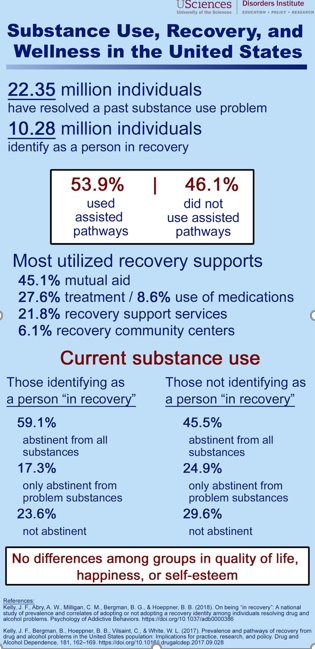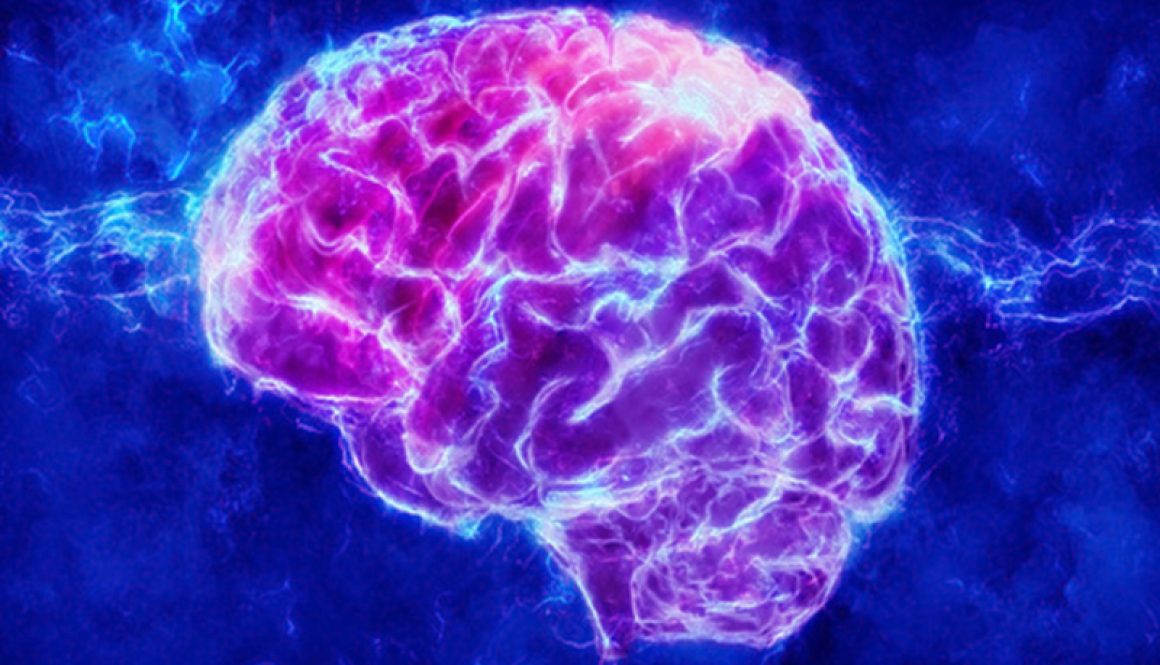The Dopamine Diaries
“Dopamine” has been incorrectly promoted as the “pleasure chemical” in the brain. I have said this and I have taught people (wrongly) that dopamine is associated with pleasure.
First off, there are no chemicals in the brain. Better description would be something closer to “electrical pulses between cells” rather than “chemicals”.
Second, dopamine does produce contentment.
The main function of dopamine is in “energizing us toward a goal”.
It is more accurately described as the “reward” neurotransmitter.
From an evolutionary point of view, dopamine made it possible for humans to seek out things like food, safe relationships, safe groups, and sex in a very dangerous, unpredictable and scarce environment.
It was not pleasure. It was reward. Dopamine made reward seeking possible.
In The Genes
The gene associated with dopamine is DRD4. The mutation, (allele), associated with a dysfunctional dopamine system is 7R.
Therefore, dopamine deficiency = DRD4-7R
Terminology:
- DRD4: DR (dopamine receptor) D4 (number 4).
- 7R: 7 – repeat allele (“variation or version” ) of the DRD4 gene.
- 7R = Mutation.
- 7R is associated with poor dopamine accessibility (deficiency).
What Is It?
Dopamine is a key neurotransmitter.
It regulates cognition, attention, emotional processing, motor activation, short-term memory, behavioral inhibition and reward. (Wickens, 1990; Nieoullon, 2002; Dreber et al., 2009; Eisenberg et al., 2010b)
Dopamine is not the “pleasure” chemical.
It is involved in goal oriented activity and there is a pleasurable component / feel good component (energy, focus, excitability, confidence).
However, the idea of “pleasure” is a bit misleading.
DRD4-7R is a mutation present in 20.6% of the population.
The Wanderlust Gene
DRD4-7R has been called The Wanderlust Gene.
It’s called Wanderlust because this mutation is equated with adventure seeking, risk taking behavior and restlessness.
Dopamine has been getting more and more press over the past 5-10 years.
Here is a better description: Sensation Seeking. I like that description.
An insatiable pursuit of sensations.
Dopamine & Addiction
Note: “The dopamine deficiency hypothesis” and the dopamine depletion explanation have been the cornerstones of the neurobiology of addiction for decades.
It is not typically talked about in a holistic manner. In that, the focus does not go beyond the addiction connection.
However, it has been the most common “scientific”/medical” explanation for addiction.
Yet, it is a controversial and frequently challenged explanation.
- There are multiple etiological explanations for addiction.
- There are sociological explanations.
- There are hardcore fundamentalist Christian explanations (sin).
- There are people who believe addiction is a social construct.
- And on and on…
A Tragic Comedy
Substance Use Disorder is contextual as well as an individualized experience. There is little certainty where matters of the brain are concerned. Addiction is a brain issue.
It is strange and dangerous when people present theories and explanations in a manner that implies certainty. There is no certainty to be found in terms of addiction treatment and recovery. It’s intuitive and recovery is an imprecise process.
We understand only 5-10% of brain functioning. We do not examine the brain when making a SUD diagnosis.
Yet, we speak with 100% certainty on cause and cure.
The arrogance and hubris of behavioral health = tragically comical.
The Over-emphasis on The HIGHJACKED BRAIN
Absolutist application of the neurobiological brain disorder model has been problematic.
It is clear there is a “dopamine and addiction connection”.
However, this “connection” is over-used and over-blown.
It is inappropriately applied across the board in SUD settings.
Dopamine Despair IS NOT UNIVERSAL
For example, nearly every person who walks into a rehab will be told their brain has been hijacked.
In reality, only a minority of the participants are dealing with classic dopamine depletion.
The actual percentage of people with a true “brain-change” varies within any given population and treatment setting.
There are plenty of people who meet criteria for SUD severe; yet do not fall into a permanent state of dopamine despair.
Going To Rehab?
People go to detox and rehab for a wide variety of reasons.
A few examples include:
- To be physically safe during detox.
- To satisfy the requirements of a professional monitoring board.
- To satisfy the requirements of an angry spouse.
- To satisfy the requirements of a concerned employer
- And on and on…
It is reasonable to assume that a fair number of people who land in rehab – ARE NOT in the throws of full out dopamine distress.
Their brains have not been “forever” changed.
They have a medical condition that needs to be treated and stabilized. FULL STOP. Nothing more, nothing less. That is the purpose of acute care.
Beware The Broad Brush
This is why it is problematic to paint with such a far-reaching exceptionally broad brush.
The reasons for a wide range of “dopamine depletion typology” include:
- Drug of “choice” (certain drugs dysregulate dopamine in more problematic ways—methamphetamine SPIKES for example).
- Length of using career (the longer the using career the deeper the DRD4 problems)
- Genetic factors
- And a growing body of literature points to ethnic background, country of origin, etc..
- Along with cultural/societal factors (stress related to generational trauma/poverty).
There are clearly people who have less baseline dopamine compared to the general population.
“The Real Alcoholic” is how it has been described in some recovery circles.
However, when we look beyond substance use disorders we see many other manifestations of the DRD4-7R phenomenon.
“The Risk Taker”
“The Workaholic”
“The Migrator” (ancient migration connection).
People with Substance Use Disorder and people without substance use disorder have the DRD4-7R gene.
People who have never used alcohol or drugs and people who use the hell out of alcohol and drugs have the DRD4-7R gene.
This DRD4-7R Thing Goes WAY Beyond Addiction
20.6% of the population has DRD4-7R.
This conversation goes way beyond addiction.
And that is a good thing. We are human beings. Not DRD4-7R aliens.
We (people with SUD/people in recovery) are no different than our fellow man.
We are certainly no different than the 20% of Americans who make up the DRD4-7R group.
It’s not “addictive thinking”. It’s DRD4-7R thinking.
Stone Age Origins
Some History/Random Thoughts:
DRD4-7R appears on the “scene” for about 50,000 years ago.
They tell us there is a connection between migration and DRD4-R7. For instance, decreased dopamine action (presence of DRD4-7R allele) contributes to risk taking, recklessness, goal oriented behavior. All of which are necessary for migration.
How do “they” know about the DRD4-7R allele and dopamine deficiency:
Psychology Today Is My JAM:
I found an article in Psychology Today that provides one of the better explanations:
Basically, “they” have employed new techniques and methodology to support this theory—focusing on gyrification.
Quote from the PT article:
“DRD4-7r is famous in neuroscience circles for being a problematic member of chromosome 11.
Palaniyappan et al. recently found that those with DRD4-7r and a diagnosis of ADHD had less prefrontal gyrification than those with a different DRD4 allele4.
Gyrification analysis is a relatively novel approach at assessing neural development by exploring the extent of cortical folding in contrast to volume analysis, which has been done traditionally using voxel morphometry.
Gyrification ceases and remains constant by around the second year after birth, but before this crucial milestone, gyrification can be disturbed by perinatal complications.
As gyrification is influenced by both environmental and genetic factors, the reduced folding in patients with ADHD and who have the DRD4-7r allele, seems to suggest that the 7r allele could be involved in this hypogyrification”.
Psychology Today – Jack Pemment, 2019
Here is link to the entire psychology today article: https://www.psychologytoday.com/us/blog/blame-the-amygdala/201909/the-curious-personality-the-drd4-7r-allele
Side Note: Who is the “they” mentioned above? NEURO-SCIENTISTS of course.
Dopamine Deficient Misfits
In reality, the DRD4-R7 allele is merely a marker for a neurobiological process and an accompanying set of behavioral norms.
Behavioral norms include restlessness, impulsivity, novelty seeking, risk taking and pleasure seeking.
This DRD4-7R manifestation of the human condition is the result of many different factors.
These factors range from genetics to trauma to environment and culture.
There is no question that I have lived my entire life as one of the 20%.
I am surely one of the “Dopamine Deficient Misfits”.
My Case
In my case, I explain my dopamine “shortage” in the following manner:
The Rich Jones X Factor:
- Genetics +
- Early Trauma +
- Early Use +
- Toxic Environment/Messaging +
- Larger Environment/Culture =
A DEEP PROBLEMATIC DRD4-7R ISSUE
Larger Environment / Culture
What do I mean by “Larger Environment / Culture”.
The 1980’s were the twilight of the “suck it up” culture. Corporal punishment, for example, remained somewhat commonplace (beyond the pathology in any given home).
It was a more domestically violent era. A more reckless era.
I grew up during the end times for free-range children. We played outside. We were left alone.
We found our way through the city. We drove motorcycles without helmets and seat-belts were an after-thought.
Lot’s of opportunity for risk taking.
19 years in full sustained remission from opioid use disorder and alcohol use disorder.
I have no desire to use substances. But I am still dopamine challenged.
Why am I drawn to things that spikes dopamine? I am drawn to all kind of things that spike dopamine. Big things and small things.
Baseline Dopamine
When baseline dopamine accessibility is low (or lower than “normal”) the unconscious search to get a dopamine hit drives behaviors (increased impulsivity, risk taking, etc…)
Example: there is a clear connection between 7R allele (deficiency) and reckless spending.
Full article/link: https://www.frontiersin.org/articles/10.3389/fnbeh.2018.00034/full
Other random/weird behaviors (may or may not be a dopamine connection–not sure):
Why am I obsessively drawn to “motivational” videos.
Vikings soundtrack; Mulligan Brothers, and on and on…
If it’s “good” I will watch it over and over. In a very strange and obsessive manner.
Music : I will find a new song and listen to it over and over?
Sports. I had to play all day. Not only because I wanted to be a good athlete. I was obsessed. It went beyond the obvious athletic goals.
Side Note: The problem of tolerance. Drugs, alcohol, sex, screens, food all have very distinct limits. This has been written from the beginning. Hedonistic treadmill. Tolerance. Hedonistic Adaptation.
“The Real Alcoholic”
Things we have heard, (very interesting things):
There is a bunch of information challenging the Alcohol Use Disorder and DRD4-7R connection (DRD4-7R variant) .
It’s just not completely clear how many people labeled “Alcohol Use Disorder” actually have progressed to the classic “alpha” alcoholic.
The classic “dopamine deficient” alcoholic—“The Real Alcoholic”
Full article: https://onlinelibrary.wiley.com/doi/abs/10.1002/(SICI)1096-8628(19970919)74:5%3C483::AID-AJMG5%3E3.0.CO;2-P
Much More Work Needed
At the same time; there is a SUD/dopamine “connection” and more work needs to be done:
Dopaminergic abnormalities are implicated in the pathogenesis of substance abuse.
Several genetic variants, especially DRD2 and DRD4, were previously reported in the literature as associated with substance abuse.
Carriers of the DRD4 7R allele showed greater susceptibility to alcohol dependence and opioid dependence.
Among carriers of the 7R allele, a higher rate of cigarette smoking was observed.
Ellis et al. described a connection between 7R and neuroticism and nicotine dependence, and Nederhof describes a connection to pathological gambling.
Full article: https://www.ncbi.nlm.nih.gov/pmc/articles/PMC3560519/
Kids With ADHD
Kids with ADHD: There seems to be more universal agreement about the ADHD/Dopamine deficiency connection.
Article below: “Conclusions: Children with ADHD possessing the DRD4 7R allele require higher doses of methylphenidate for symptom improvement and symptom normalization.
This pharmacogenetic study demonstrates that the 7-repeat allele of the DRD4 gene VNTR polymorphism correlates with treatment outcomes.
Here is the Link: https://www.liebertpub.com/doi/abs/10.1089/cap.2004.14.564
More on KIDS with ADHD https://www.nature.com/articles/4001350.pdf?proof=true
Research–MORE RESEARCH
There is not enough research to speak with certainty on dopamine.
But there is enough information available to support more extensive study and we need to pay attention to dopamine.
Some other considerations:
The frequency of allele variants varies among ethnic groups, which makes the study of their associations more difficult.
The 7R allele has low prevalence in Asia (2%), but high prevalence in America (48%) [link].
The 7-repeat allele has been reported to encode a receptor with lower affinity for dopamine.
In vitro studies indicate that the sensitivity of the 7R allele is half that of the 2R and 4R variants [link].
The 7R allele is associated with various psychiatric disorders including ADHD, dependences, pathological gambling, alcoholism, drug dependence and bulimia nervosa [link – link].
Autism & Schizophrenia
Several studies also described associations with autism and schizophrenia [link–link].
However, in these disorders other genes have received more attention (e. g. [link]).
DRD4 length polymorphism has been described in connection with specific behavioral phenotypes.
Including externalizing behavior problems [link], the personality trait of novelty seeking, impulsive personality traits, anger, short temper and thrill seeking and aggressive and delinquent behavior, as compared to other genotypes (e. g. [link]). COMMON THEME: IMPULSIVE; RISK TAKERS ETC…
Kang et al. [link] found that the short allele was associated with significantly lower anger in tendency to anger and higher forgiveness traits.
However, the functions of all the individual variants have not been confirmed [link] and the effects of the variants on transporter levels cannot be generalized to neuropsychiatric disorders.
Despite the large number of empirical studies in this field, a review article on the dopamine D4 receptor gene DRD4 and its association with psychiatric disorders is still lacking from the literature; hence, the present article reviews current scientific findings in this area.
Link to complete article: https://www.ncbi.nlm.nih.gov/pmc/articles/PMC3560519/
Criticism
Common Criticism on the dopamine deficiency issue.
Heterogeneity problem: Kluger et al. , in a meta-analysis, stated that despite many authors having found the presence of longer alleles to be associated with higher novelty seeking scores, on average there is no association between DRD4 polymorphism and novelty seeking. The heterogeneity among the studies is very high.
Question extraversion and risk taking: De Luca et al., in a follow-up study, presented evidence indicating that there is a genetic influence of the DRD4 gene on human temperament at birth, at 1 month of age and at 3 years of age.
The study showed, only in part, previous results of a link between the DRD4 gene and human temperament.
None of the extraversion or exploratory behavior measures were related to the 7R form of DRD4.
ADHD & DRD4
ADHD is connected. But not surprisingly, still some questions and concerns:
VNTR polymorphism in the DRD4 gene associates with ADHD across numerous studies.
Association between ADHD and the 7-repeat allele has been widely documented.
The 7-repeat allele was found in 41% of ADHD patients, but in only 21% of the control group.
A meta-analysis of 21 studies revealed evidence of significant association; however, negative results were also published.
According to Faraone there is an association between ADHD and DRD4, but it is small.
Others Issues
Independent studies showed an association between the presence of allele 7 and personality traits associated with impulsivity.
Further studies are needed to confirm these findings and explore the role of specific gene-gene and gene-environment interactions and other co-occurring psychopathology among individuals with ADHD.
The spectrum (development disorders) may be impacted but little data exists.
Several studies found a positive association of the 7R allele of the DRD4 gene and autism, but the DRD4 exon 3 polymorphism is still unlikely to play a major role in the etiology of autism.
Good Stuff?
But there may be something good about DRD4-7R deficiencies.
Stress inoculation: According to various studies DRD4 variants can affect individual responses to stress or trauma, similar to several other gene variants.
Das et al. described the effect of the DRD4 gene and childhood environment interaction on resilience to stressors.
Armbruster et al found that carriers of the 7R allele together with the 5HTTLPR L allele exhibit lower cortisol stress responses.
Side Note: It appears I thrive in a crisis/acutely stressful situation.
Perhaps my DRD4-7R issues have an upside?
Moderates, Influences & Arouses
The DRD4 genotype also moderates the association of experienced parental problems during childhood (e.g., parental depression, marital discord) with loss or trauma [61].
The 7R allele influences the development of personality in a way that provides protection against adverse outcomes [link].
Emotionally arousing situations/more sensitive if DRD4-7R :
Results showed increased brain activity in response to unpleasant images compared to neutral images in the right temporal lobe in participants with the DRD4-4R/7R genotype versus participants with the DRD4-4R/4R genotype.
The increase in right temporal lobe activity in individuals with DRD4-4R/7R suggests greater involvement in processing negative emotional stimuli.
Intriguingly, no differences were found between the two genotypes in the subjective ratings of the images.
The findings corroborate the response ready hypothesis, which suggests that individuals with the 7R allele are more responsive to negative emotional stimuli compared to individuals with the 4R allele of the DRD4 gene.
FULL ARTICLE: https://www.ncbi.nlm.nih.gov/pmc/articles/PMC4272659/
Evolution
Again, the evolutionary psychology is interesting.
All of the following traits/behavioral tendencies would serve a purpose in advancing the species. “SOMEONE NEEDS TO LEAVE THE CAVE”:
The 7R allele is estimated to have emerged 40,000 to 50,000 years ago, which is the same time that major human migration occurred (Wang et al., 2004).
This genotype, including its homozygous and heterozygous variations, is found more frequently in populations who had to take great risks to travel long distances. Such as early immigrants to the Americas (Chen et al., 1999; Eisenberg et al., 2010a).
The association with risk taking was corroborated by research showing that individuals with the 7R allele of the DRD4 gene engage in more financial risk taking compared to those without this genotype (Dreber et al., 2009).
Humans with at least one 7R allele show increased levels of physical activity (Faraone et al., 2001; Kluger et al., 2002; Grady et al., 2003; Grady et al., 2005b; Li et al., 2006; Grady et al., 2013)
Also, they appear to be more reactive to environmental factors (Sheese at al., 2007; Belsky et al., 2009; Olsson et al., 2011; Grady et al., 2013).
The 7R allele is over-represented in the phenotype of Attention-Deficit/Hyperactivity Disorder (ADHD) (LaHoste et al., 1996; Faraone et al., 2001; Grady et al., 2003; Grady et al., 2005a; Li et al., 2006).
In addition, the 7R allele is associated with “limit pushing” behaviors including (among other things): disinhibition (Congdon et al., 2008).
Disinhibition will promote risk taking.
Contributes To Longevity
Intriguingly, a study by Grady et al. (2013) has shown that the 7R allele contributes to longevity by moderating the beneficial effects of an enriched environment in increasing lifespan.
The 7R allele of the DRD4 gene has been associated with the response ready hypothesis, which suggests that individuals with hyper-vigilance might be selected for by environments that are resource-depleted, time critical, or rapidly changing (Jensen et al., 1997; Wang et al., 2004).
It is speculated that the 7R allele and its association with the response ready hypothesis might have played a role in its positive selection and human migration (Chen et al., 1999; Ding et al., 2002; Wang et al., 2004; Grady et al., 2013).
More Psychology Today:
Psychology Today: DRD4-7r appears to have profound implications for the carrier, and seems to be involved in a number of fateful activities that could impact the carrier’s entire life.
A propensity for greater risk-taking, a heightened sensitivity to the environment, being at greater risk of attention and behavior issues, and demanding more parental attention in the formative years all set one up for an exhausting life – all because of one version of a receptor that isn’t as receptive to stimulation as the other versions.
In fact, the receptor, much like the carrier, does not seem to play well with others.
The 7r allele almost seems like a mischievous imp, inspiring and pushing the carrier into antisocial and asocial behaviors.
Link: https://www.psychologytoday.com/us/blog/blame-the-amygdala/201909/the-curious-personality-the-drd4-7r-allele
Random Stuff
How do we get better? How do we get “normal”?
For clarification purposes: I DO NOT WANT TO GET BETTER.
Here is NORA VOLKOW on “Getting Better” and “Interventions” which address dopamine for addiction (food, drugs etc..)
Volkow: https://www.ncbi.nlm.nih.gov/pubmed/29142296
Test For Deficiency
How do I know if I have “dopamine deficiency”?
Example of a recommended test for Dopamine levels
I will be making arrangements to take this test.
I will let you know how it goes. How much it costs etc…
Dopamine Mechanism
Great video on the actual mechanism of dopamine (it is not a pleasure neurotransmitter; rather an action/goal attaining neurotransmitter.
It keeps us moving toward the “reward” (food, achievement, drugs, love/relationships etc…)
Final Thoughts
At the end of the day, you need to speak with professionals, medical personnel, etc..
Find an integrative medicine doctor.
Beware of people who talk with too much authority and act with too much certainty.
These are uncharted waters. Advocate for yourself.
I have come to my own conclusions.
Now I need to develop my dopamine plan of attack.
I will share this plan. I am going to take a very holistic approach.
Sign up for RECOVERY CARTEL (www.recoverycartel.com) to ensure you get the updates.





